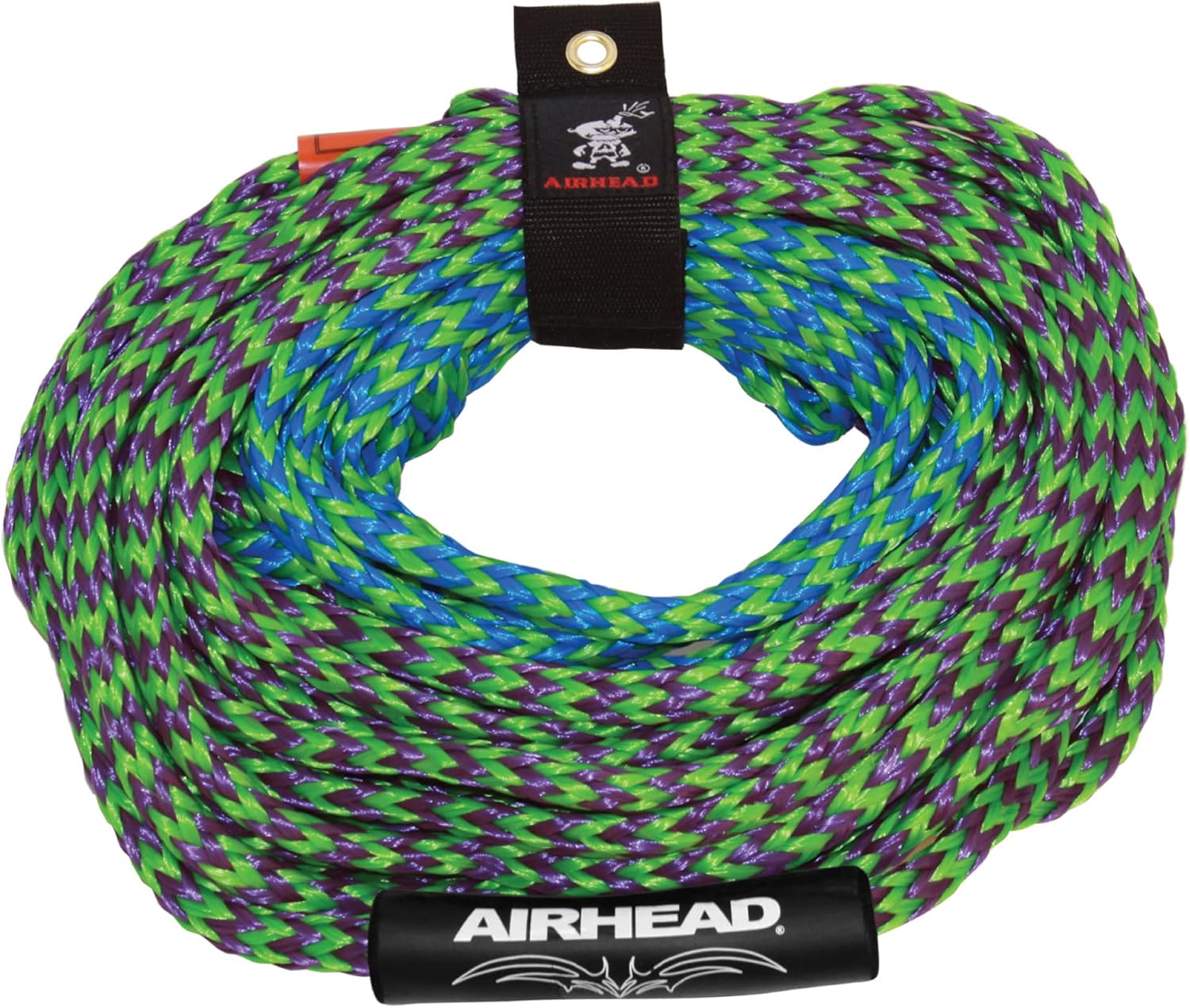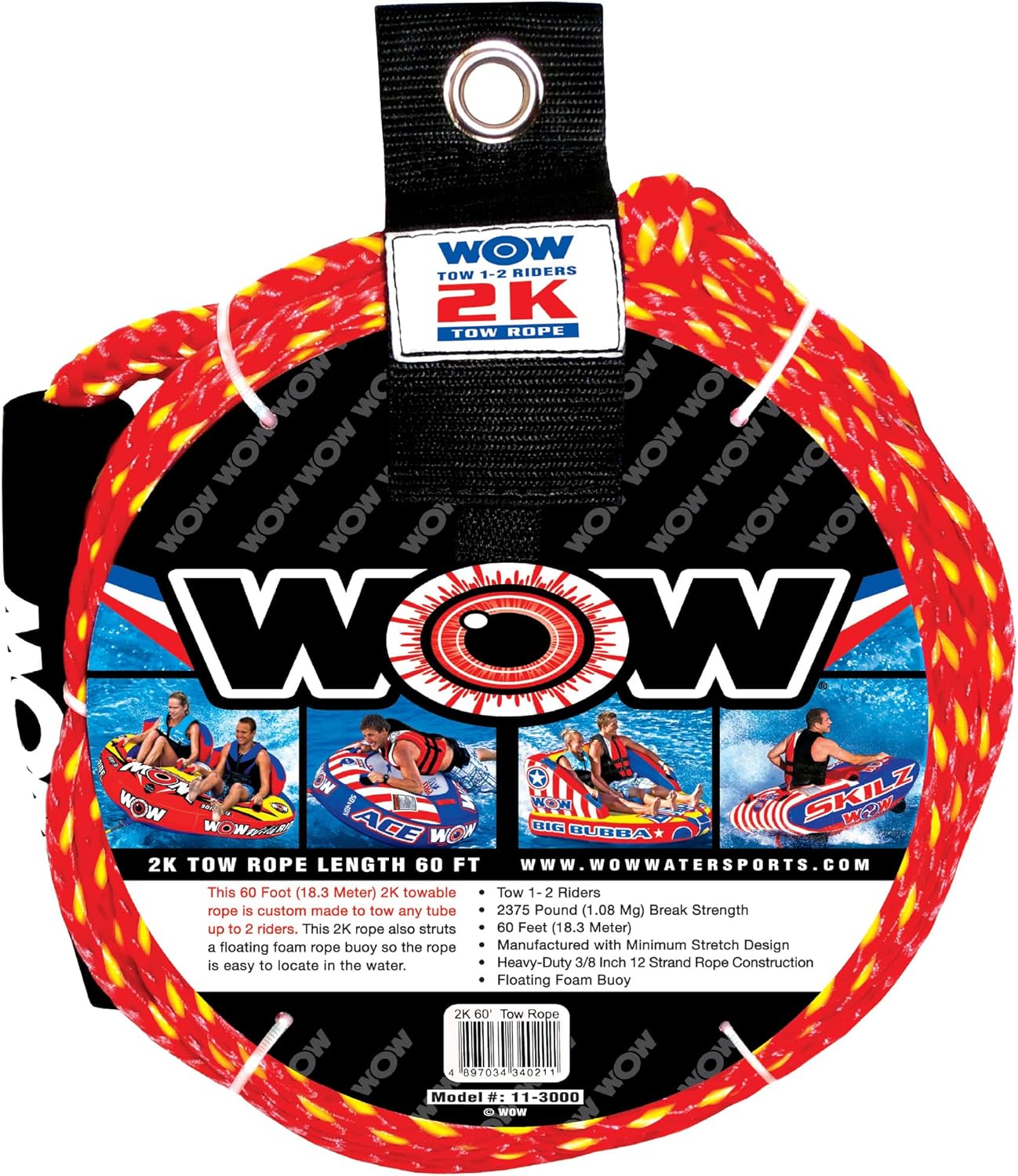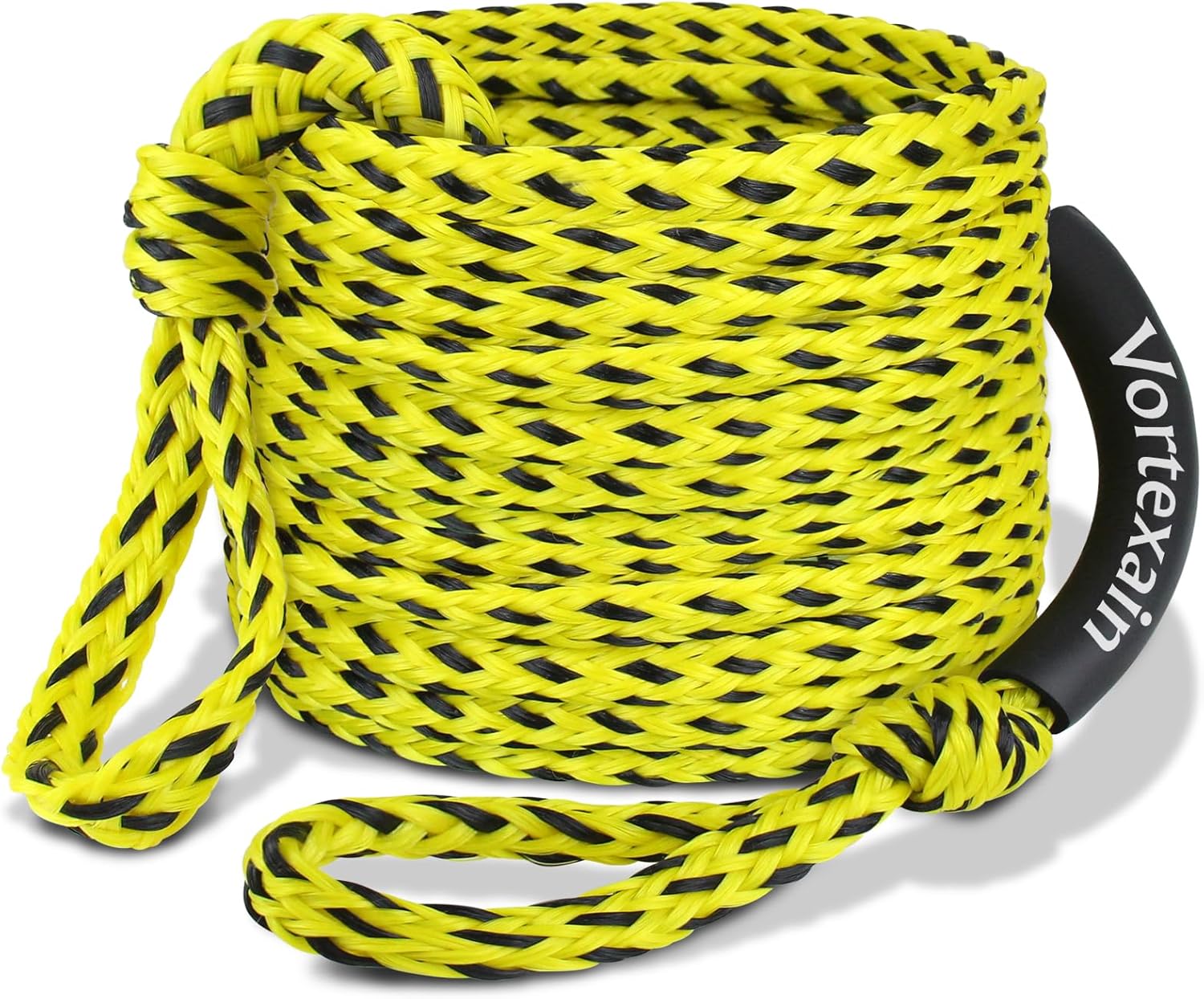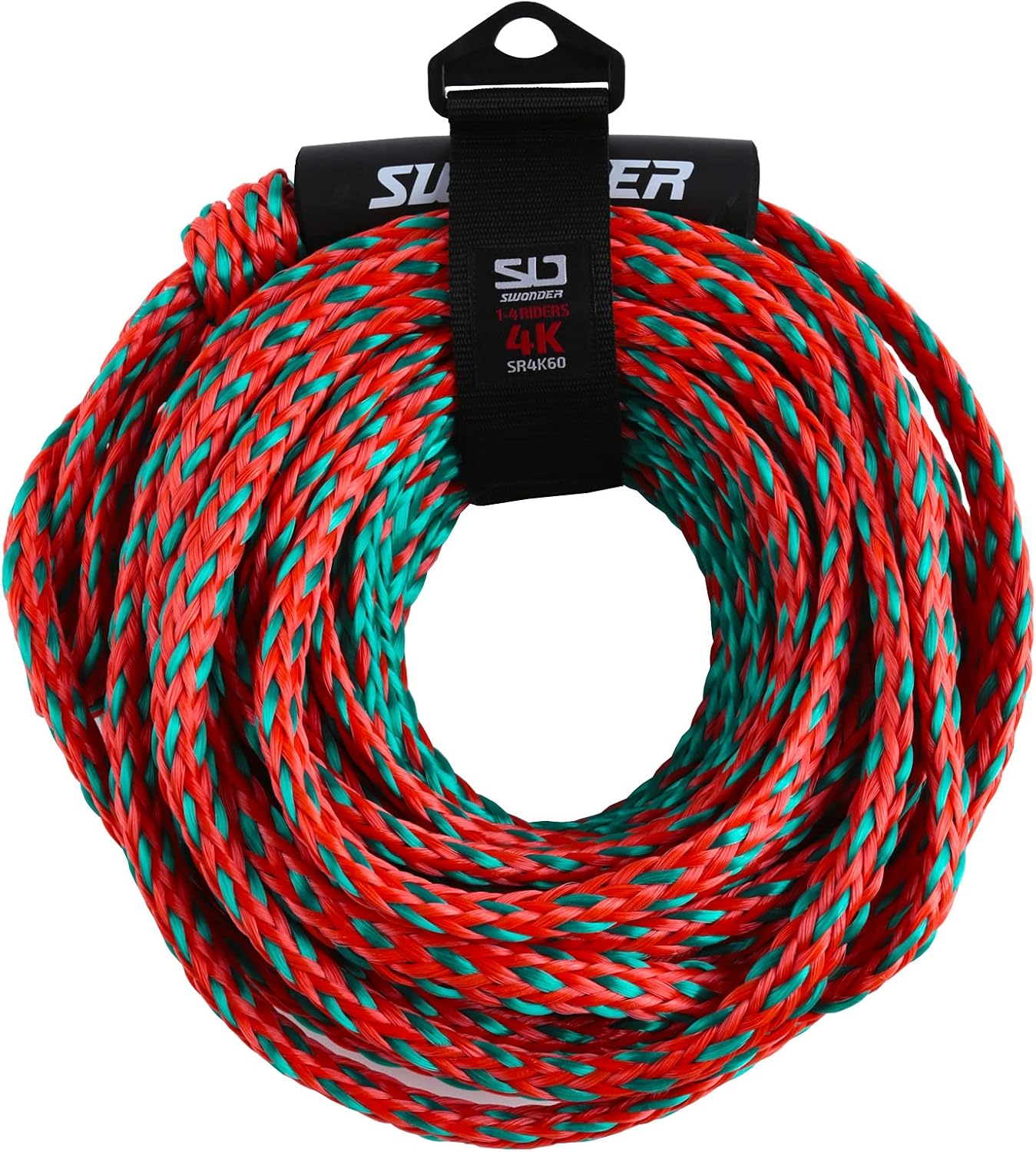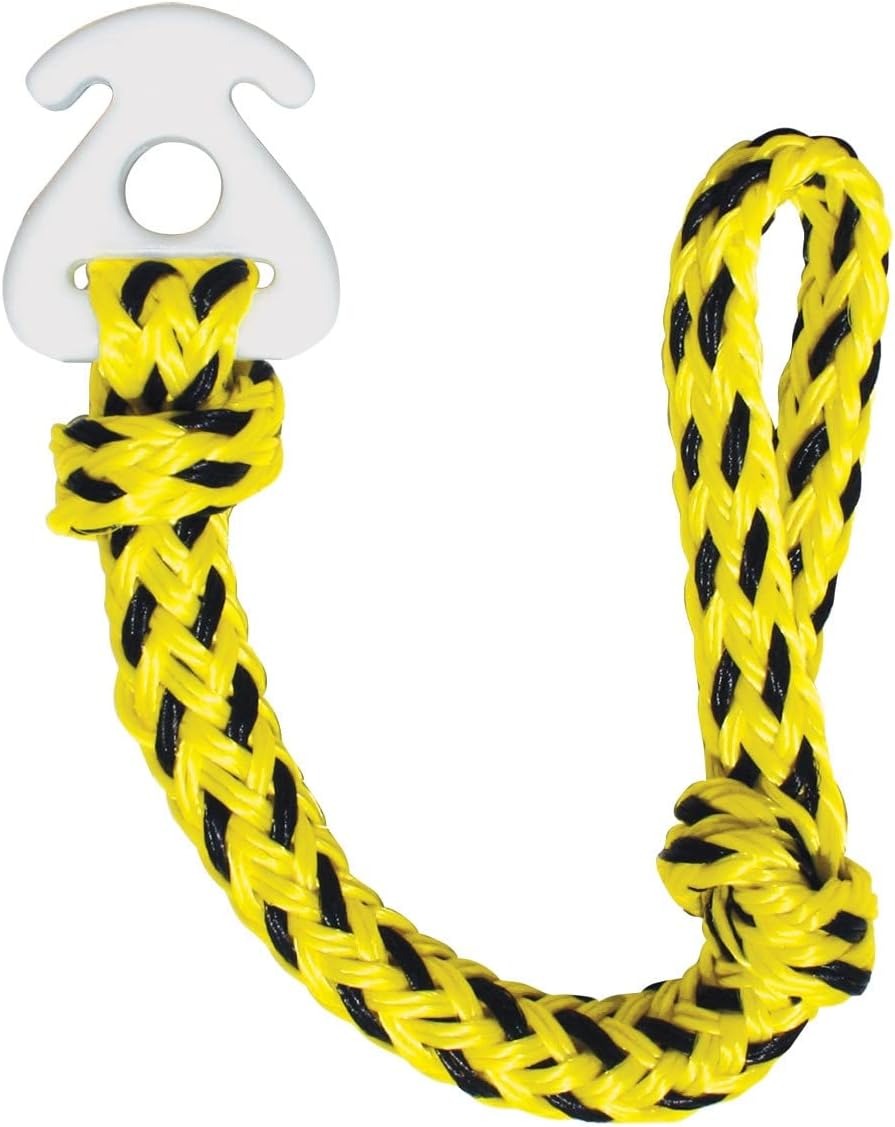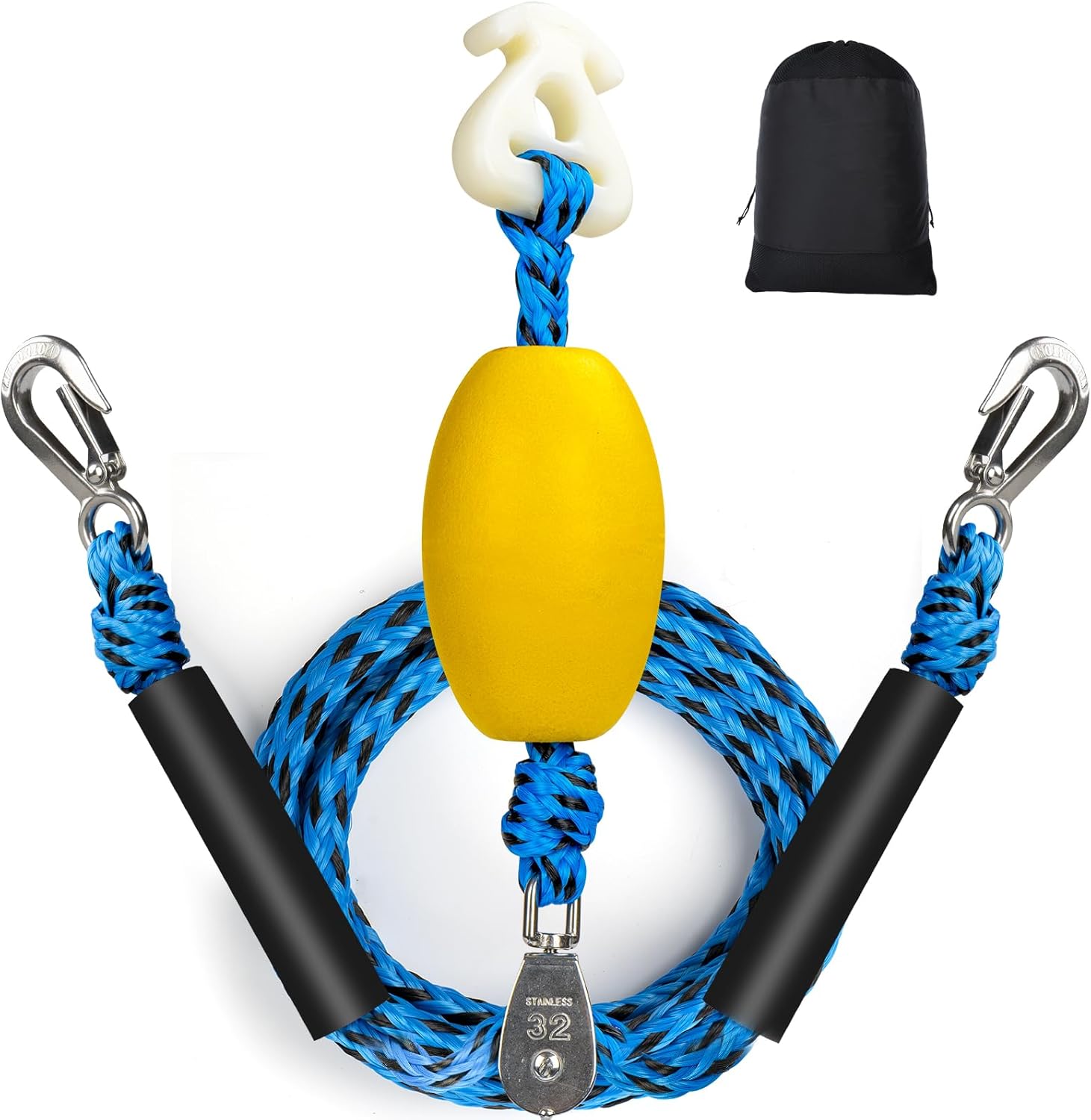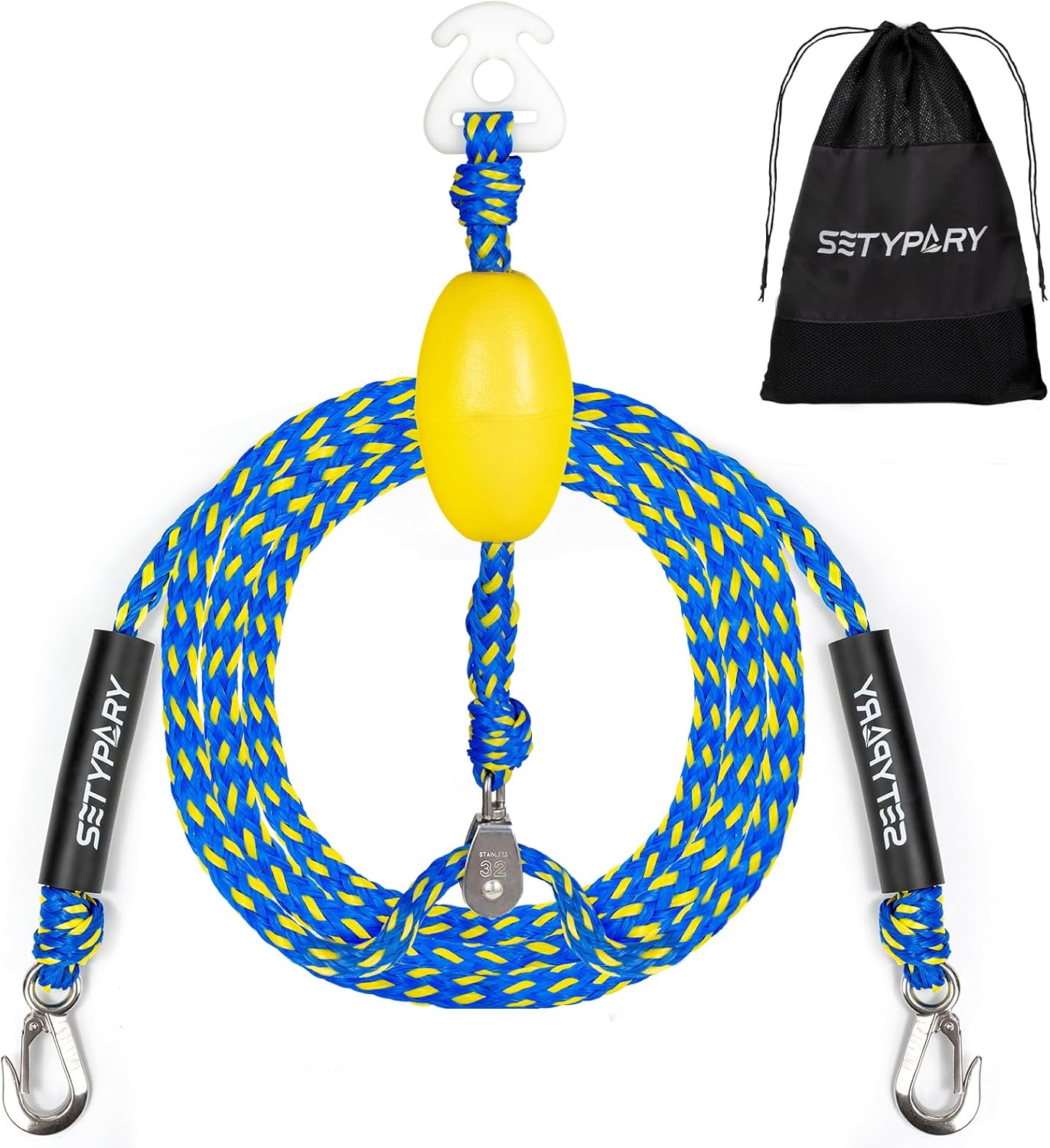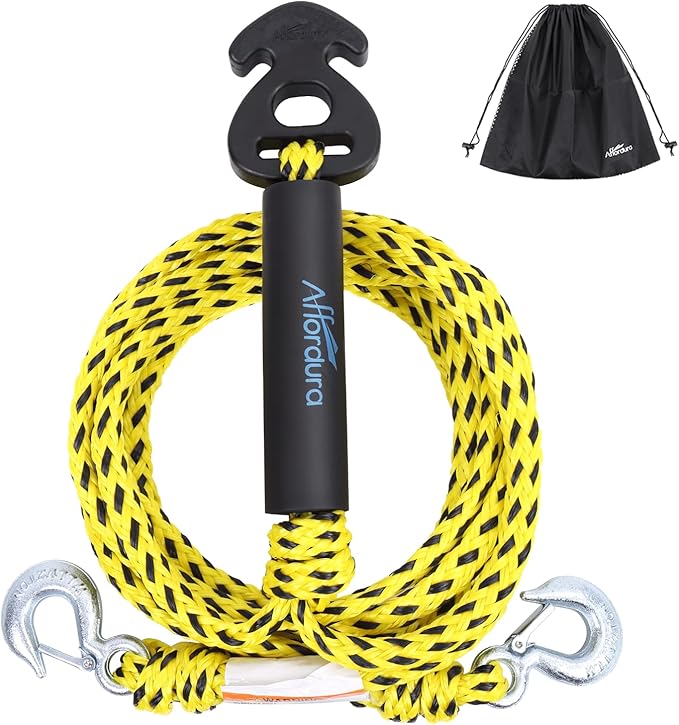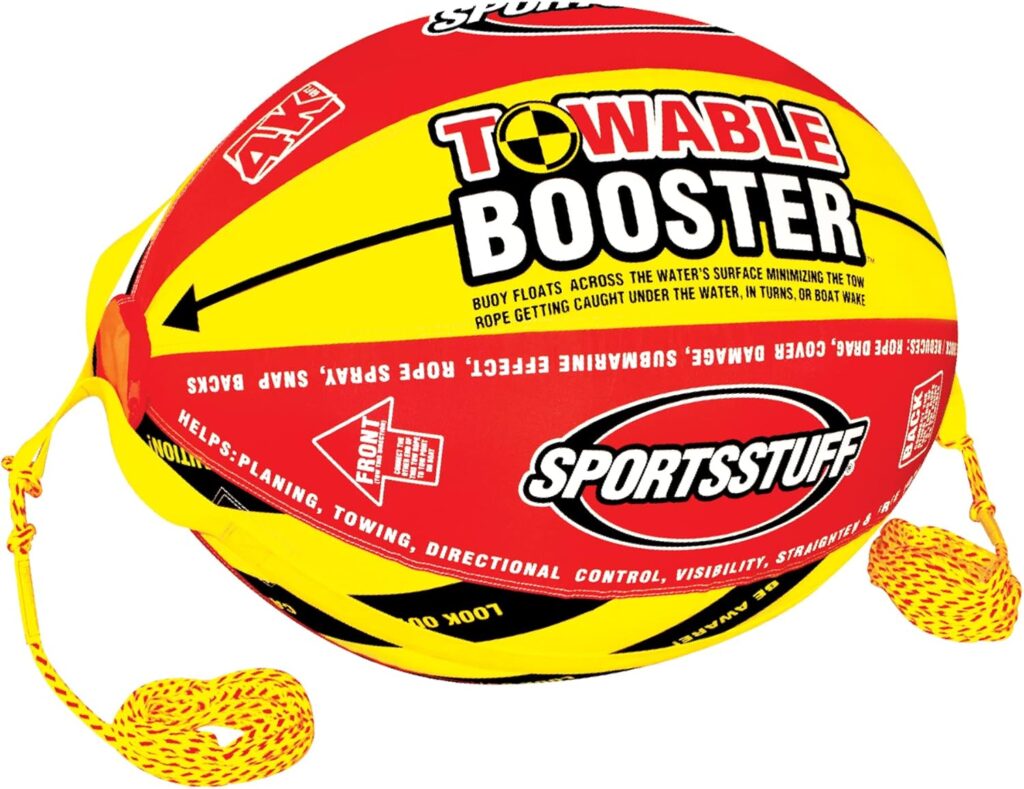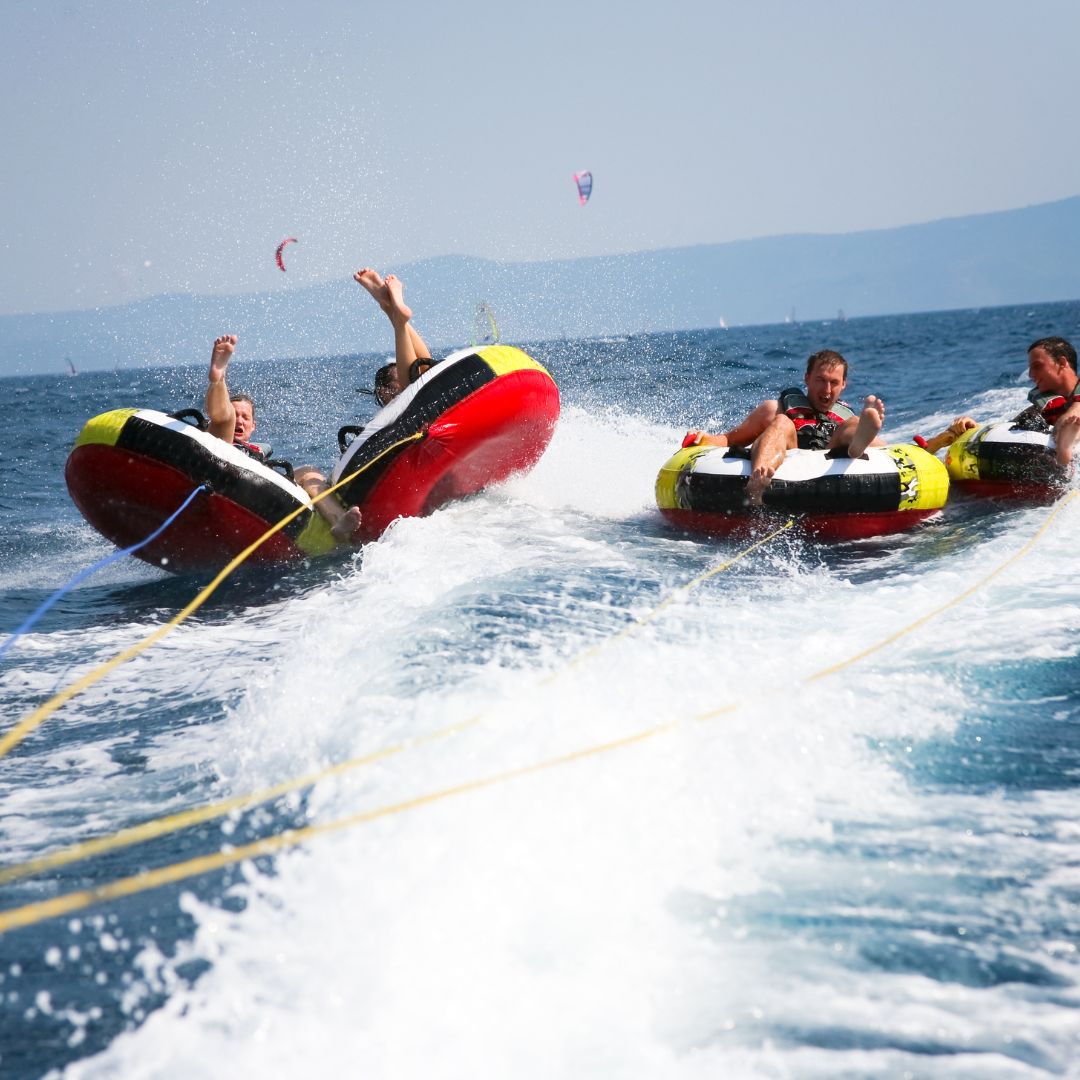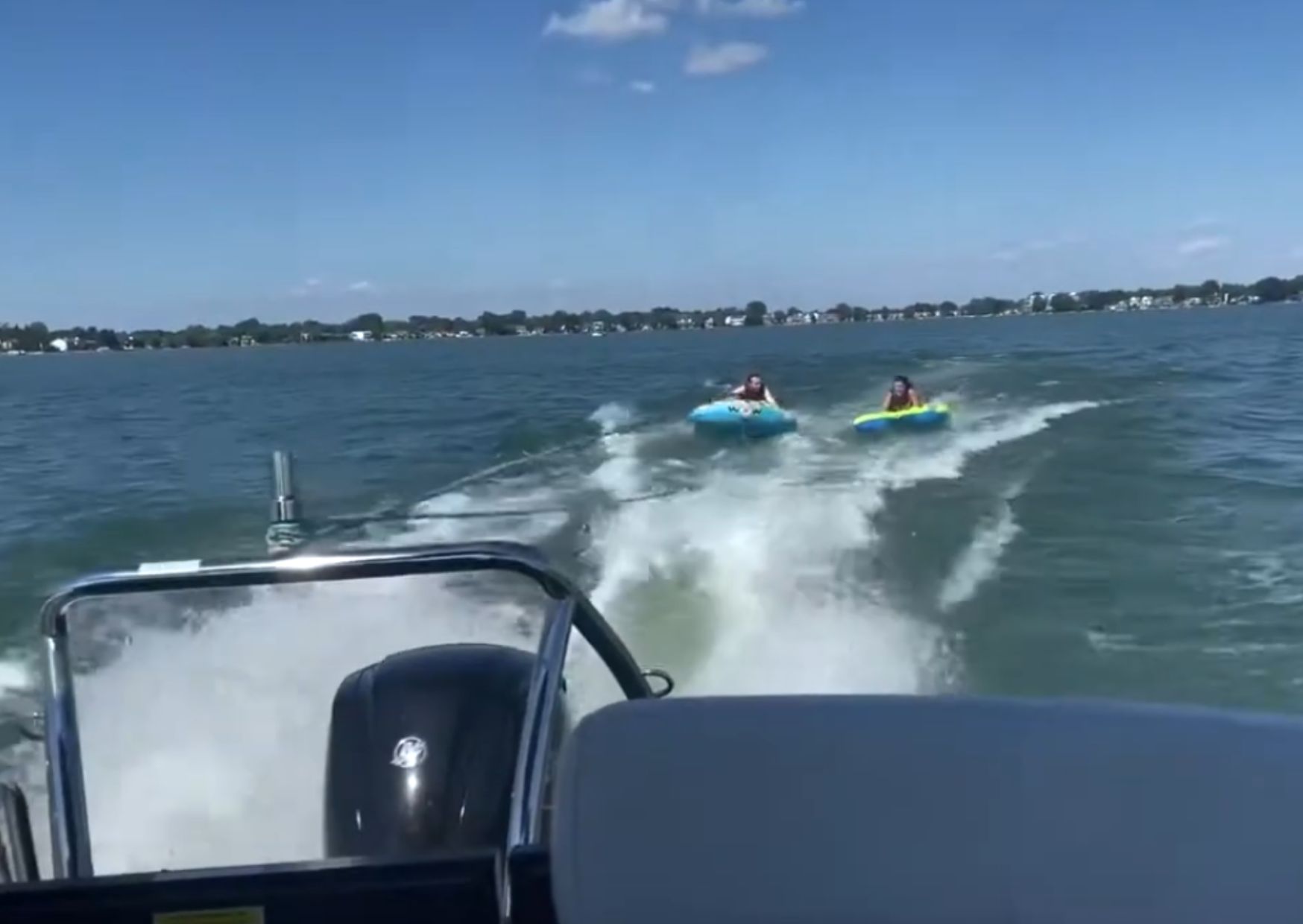How Long Should A Tube Rope Be
How long should a tube rope be? Long enough to keep you out of the boat’s wake, but not so long that you become an unintentional kite. It’s not just a matter of guesswork or stretching out a bit of rope you found in the garage.
A poorly chosen rope length can turn a fun day on the water into a lesson in physics you never wanted to learn. Riders can be flung into rough wakes, slapped with ropes, or yanked with the subtlety of a bullwhip.
People have broken fingers. Some have lost teeth. One particularly unlucky uncle became a YouTube legend for all the wrong reasons. So yes, length matters.
How Long Should A Tube Rope Be
How long should a tube rope be? The ideal length for a tube rope is between 50 and 65 feet. According to the Watersports Industry Association (WSIA) and most certified rope manufacturers, this range balances safety, performance, and rider comfort. Specifically:
- 50 feet is better for tighter turns and younger riders.
- 60 to 65 feet gives more distance for wake play and is the sweet spot for most adults.
Some people stretch this to 75 feet, but this is usually only appropriate for large lakes, heavier riders, or when towing two tubes side by side. Any longer, and you risk significant rope sag, excessive snapback, and unpredictable tube behavior.
Does Your Boat Type Affect the Required Rope Length?
Yes. Whether you’re working with a ski boat, a pontoon, or a fishing vessel, the type of boat impacts how the tube behaves at different distances.
- Ski boats can handle sharp turns and higher speeds. A 65-foot boat tow rope works well here, offering enough slack to let the tube glide across wakes.
- Pontoon boats are heavier and slower. Riders behind pontoons often need a slightly shorter rope (50 feet) to stay within the wake and avoid sluggish tubing.
- Low-powered boats (under 90HP) need shorter ropes to keep the tube planing. A long rope on a weak boat equals drag and frustration.
Even if you own the best towable tube for boating, know that the rope length must match not just the rider, but also the boat’s torque and wake pattern.
Rider Age and Skill: Not All Tubers Are Equal
The rider’s age, weight, and experience directly affect how long the towable tube rope should be.
- Young riders or first-timers: Stick to 40 to 50 feet. This keeps them closer to the boat and within smoother wakes.
- Teenagers and experienced riders: Use 60 to 65 feet, which allows wider swings and more fun across choppy wakes.
- Multiple riders or adults: Same range, but prioritize ropes with high tensile strength and less stretch to avoid surprises.
Tubing behind boats with passengers of mixed ages? Adjust length per session. Never generalize. The goal isn’t just fun, but predictable, controlled fun.
|
|
|
|
What Happens If the Rope Is Too Long or Too Short?
A lot more than you might think.
- Too short (under 40 feet): Riders may end up in turbulent water directly behind the boat. It also increases the chance of the tube colliding with the transom or prop wash.
- Too long (over 75 feet): The tube may gain too much speed in turns (centrifugal force), leading to dangerous whip-outs. Long ropes also sag and drag, especially with heavier tubes.
If you’re shopping for a towable rope for a tube, ignore generic rope lengths and ask yourself what you’re optimizing for: speed, safety, control, or thrill.
Two Tubes: Double the Fun or Double the Risk?
If you’re wondering how to pull two tubes behind a boat, rope length becomes even more critical. Here’s what to know:
- Use a Y-bridle to evenly distribute pull.
- Maintain equal rope lengths for both tubes. Inconsistent lengths will cause erratic drifting and mid-lake collisions.
- The ideal length remains 65 feet, but more spacing (70–75 feet) may be needed if the tubes are large or you’re running parallel.
Dragging two tubes? Always check your boat tube rope specs and ensure your motor can handle the weight and drag.
The Role of Rope Material and Stretch
Not all ropes are created equal. The material and stretch factor matter more than most realize.
- Polypropylene: The most common tubing rope. Floats, affordable, and light. But it has little shock absorption.
- Bungee-enhanced ropes: Provide some elasticity to soften jerk impacts. Best for younger or lighter riders.
- Non-stretch ropes: Required for high-speed tubing or heavier loads.
Don’t confuse a ski rope with a tow rope for tubing. They may look similar, but tubing ropes require higher tensile strength: at least 4,100 lbs for a 1-2 person tube.
How Does Rope Length Affect Wake and Spray?
Many people overlook this, but rope length directly affects how the tube rides the wake.
- Short ropes (under 50 feet): Riders stay inside the wake, avoiding large bumps but also reducing excitement.
- Longer ropes (60-70 feet): These allow the tube to swing outside the wake, generating speed and wider arcs.
However, with longer ropes, water spray increases, especially if the boat is weighted in the rear. So, the decision often becomes: smoother ride or more thrill?
Tow Rope for Tubing Outboard Motor
When tubing behind a boat with an outboard motor, there are a few things to understand about rope setup:
1. Motor Position Matters
Outboard motors are mounted externally on the boat’s transom, which can interfere with your rope if not set up properly. Unlike inboard boats, the tow point is usually below or beside the motor, which increases the risk of rope slap, propeller exposure, or water spray.
2. Use a Tow Bridle
For outboard setups especially dual-motor boats or pontoon boats, you’ll need a tow bridle. This is a Y-shaped harness that connects to the two rear cleats or eyelets of the boat, keeping the rope clear of the motor.
3. Clearance and Safety
The tow rope should stay centered and above the motor to avoid tangling or being pulled under the prop.
4. Length and Lift
You may need to use a slightly longer rope (closer to 60–65 feet) to push the tube farther out of the prop wash zone, especially when the tow point is low and water turbulence is high.
In short, outboard motors require a bridle for balance and safety, and the rope must be long and strong enough to keep the tube in clean water.
Tube Tow Rope Connector
|
|
|
|
A tube tow rope connector is a small but incredibly helpful accessory that simplifies the connection between the tube and the rope. It usually looks like a short cylindrical piece of hardware, typically made of high-strength plastic or stainless steel, with quick-connect clips on either end.
Why it matters:
- Ease of Use: It saves time. Instead of tying and untying knots, you clip the connector to the tube’s tow point and snap the rope on.
- Prevents Friction Damage: The connector keeps the rope from rubbing directly against the tube’s hardware or fabric, which prevents fraying and uneven tension.
- Better Force Distribution: Some tube connectors also act as mini shock absorbers, dispersing pull forces more evenly to the towable’s frame especially useful on multi-rider tubes.
If you’re using a towable rope for tube with a floating buoy or multi-point anchor, a proper connector helps manage stress points and reduces the chance of accidental unhooking.
READ ALSO: Best boat mirror for spotting riders
Emergency Boat Tow Rope
This is an entirely different category. An emergency boat tow rope is used for towing disabled boats, not for recreational tubing. That said, people sometimes confuse the two or search for tubing ropes hoping they’ll work in emergencies. They won’t.
Key facts:
- Purpose-Built: Emergency tow ropes are designed for low-speed, high-weight towing. They’re thick, high-tensile lines (often 8,000–20,000 lbs break strength) used to drag a boat back to dock, not to pull a fast-moving tube.
- Float vs Sink: Emergency ropes usually sink (made of nylon or polyester), while tubing ropes float to prevent fouling propellers.
- Color and Visibility: Emergency lines are often bright-colored for visibility in open water, especially if towing across wake zones or through marinas.
Don’t use an emergency rope for tubing. And don’t count on a boat tube rope to tow your disabled boat back to shore. Each has a job. And the wrong tool in the wrong moment causes accidents.
Tow Rope for Tube with Float
This refers to a standard tube rope that includes an integrated float or buoy usually in the form of a large foam bobber or inflatable donut that sits near the midpoint of the rope.
Why it’s valuable:
- Prevents Drag: The float keeps the rope on top of the water, reducing drag. When rope sinks, it slows the tube down and can jerk it around unpredictably.
- Propeller Safety: Floating ropes are easier for the driver to monitor and avoid running over. This is especially important when circling back to pick up fallen riders.
- Line Visibility: In busy lakes or crowded marinas, floating ropes are more visible to other boaters, preventing accidents or snags.
- Reduces Snapping Risk: Less water drag means less tension buildup in the rope. This lowers the chance of rope failure, especially on longer 60–65 foot lines.
Most best tow rope for tubing products now include a float by default or offer it as an optional add-on. Make sure any float is centered on the rope and doesn’t interfere with the tube’s tow point.
Can I Use Any Rope to Tow a Tube?
This is a common and risky mistake. Never assume that any rope will do. A boat tow rope must be purpose-built for tubing.
Here’s what to look for in a proper towable tube rope:
- Tensile strength: At least 4,100 lbs for 1-2 riders, 6,000+ lbs for 3-4 riders
- Rope diameter: Usually thicker than ski ropes
- Floating design: Prevents rope from sinking and getting caught in propellers
- Color visibility: Bright colors help spot the rope in choppy waters
Using a dock line or wakeboard rope is dangerous and may void your insurance policy in the event of an accident.
Adjusting Rope Length by Weather and Water Conditions
Rope behavior isn’t fixed. On windy days, choppy water, or with larger crowds in the lake, you may need to shorten or lengthen the rope accordingly.
- Choppy water: Slightly shorter rope to reduce whip
- Glass-smooth water: Longer rope for more playful arcs
- Heavy wind: Keep rope around 50 feet to limit instability
Remember: a rope that worked yesterday might not be right today. Experienced boaters adjust.
Legal Considerations and Regulations
In certain regions, there are local laws or marina rules governing tubing rope lengths. These may include:
- Maximum length (often 75 feet) to prevent accidents
- Minimum visibility requirements for ropes
- Restrictions on multiple towables in narrow channels
Always check with the waterway authority before heading out. In the event of a mishap, legal accountability often hinges on whether proper guidelines were followed.
Storage and Rope Management: Not Just an Afterthought
One overlooked aspect of owning a boat tube rope is how to store and maintain it.
- Use rope reels or coil carefully after use
- Avoid knots and kinks
- Store away from sun to prevent UV damage
- Inspect regularly for fraying or internal breaks
A damaged rope doesn’t always look damaged, but under tension, one hidden flaw is all it takes.
How Rope Length Affects Tubing Physics
Let’s put some science behind the splash.
- Longer rope = greater arc radius. That means more speed and centrifugal force in turns.
- Shorter rope = tighter response. Less room to recover from boat movement, but less risk of ejection.
Physics also tells us that longer ropes increase the chance of whip, which multiplies the rider’s velocity exponentially during turns. A 60-foot rope turns a gentle maneuver into a thrilling slingshot.
Common Mistakes When Choosing Tube Rope Length
- Buying based on price, not specs
- Using old, frayed ski ropes
- Letting rope drag in the water
- Forgetting that riders and tubes vary in weight and size
- Matching the wrong rope with the wrong tube (1-person rope with 3-person tube)
Avoiding these errors ensures safety, longer rope life, and fewer apologies.
The Bottom Line on How Long Should a Tube Rope Be
So, how long should a tube rope be? It should be between 50 and 65 feet. Whether you’re new to tubing behind boats or a seasoned waterborne thrill-seeker, understanding how rope length impacts every part of the ride: safety, control, and enjoyment is key.
Choosing the wrong rope isn’t just inconvenient. It can be dangerous, frustrating, and expensive. Get it right the first time.
When you’re ready to invest in your gear, make sure you’re not just getting a flashy label or trendy color. Your tow line is your rider’s lifeline. Choose a proper towable rope for tube, measured for your setup, and suited for your boat and passengers.
